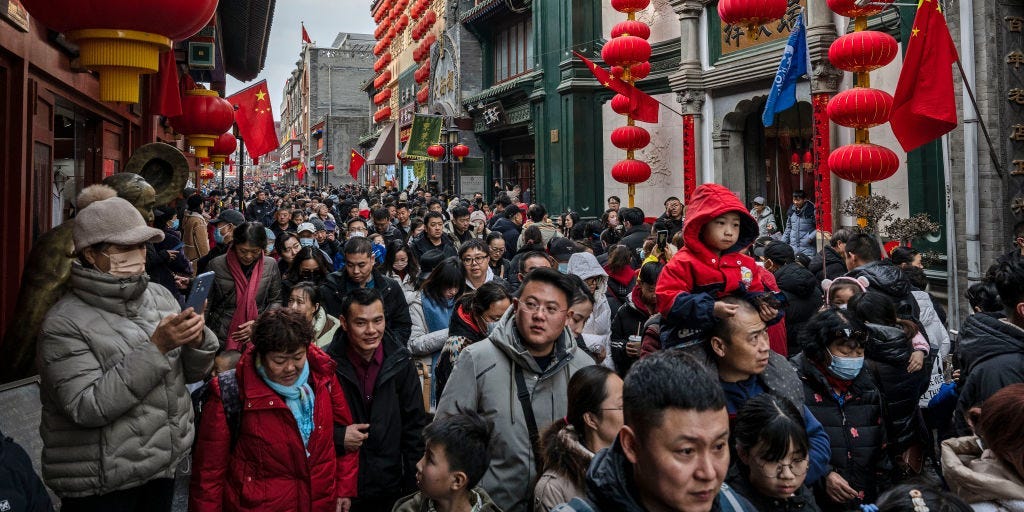China pulled out an aggressive stimulus package on Tuesday.
At a rare press briefing about China’s economy, People’s Bank of China governor Pan Gongsheng unveiled a swathe of measures, including slashing interest rates and reducing the amount of cash banks need to hold in their reserves.
The measures were significant because Beijing has been holding back on a “bazooka” stimulus even though China’s economy has been struggling to stage a convincing recovery post-pandemic.
To be sure, this is not the first attempt China has made at boosting its economy in the past few years. Chinese authorities have implemented various support measures to prop up the country’s ailing economy, but analysts have typically viewed them as piecemeal and limited in their scope and impact. In the past, Beijing has also been known to take steps like hiding unflattering data and trying to project an image of economic health, rather than addressing it publicly.
In contrast, there was a “sense of urgency” in the concerted effort Beijing demonstrated on Tuesday, Swiss private bank Lombard Odier’s CIO office wrote in a note on Tuesday.
Investors thought so, too, sending Chinese stock markets on a tear. On Tuesday, mainland China’s benchmark CSI 300 Index saw its best day in over four years.
However, Beijing’s display of resolve also triggered market speculation that it’s alarmed and panicked over the state of its economy, which is facing multiple challenges. They include an epic property crisis, high youth unemployment, and deflation.
A state of panic
“China Stimulus: Does it Signal Panic?” wrote Andrew Rocco, a stock strategist at Zacks Investment Research, who called Beijing’s new measures “drastic.”
Rocco didn’t answer the question, but market watchers said China’s 800 billion yuan, or $114 billion, worth of liquidity support for the stock markets was surprising. Pan also said authorities are considering a market stabilization fund.
“PBOC involvement in equity markets marks a clear departure from previous policy. The bank, which usually cautions against speculation, now seeks to encourage it!” wrote Freya Beamish and Rory Green at Global Data.TS Lombard, a London-based research firm.
This “suggests an element of panic in Beijing,” they added. “The fact that the PBOC feels the need to engage in unorthodox policy supports our prediction of an imminent growth recession.”
Anthony Sassine, a senior investment strategist at KraneShare, echoed the sentiment.
“The Chinese government is really looking to boost growth before year-end, and you can see there’s a little bit of panic,” Sassine told Yahoo Finance.
China is eying a GDP growth target of around 5% this year, which analysts have said will be difficult to achieve.
Notably, even on the heels of China’s big stimulus announcement, most analysts also think Beijing still needs to do more to boost China’s economy, particularly in boosting gloomy domestic demand.
Get in on the market hype anyway
Despite reservations about China’s economic outlook, analysts think investors should join the bull party — for the short term.
“Investors should ignore the noise and instead focus on the liquidity and price action,” wrote Rocco of Zacks Investment Research. He added the signals for both are bullish.
After all, “Chinese policymakers injected the economy with a lot of liquidity and promised to increase that liquidity in the coming months,” Rocco added.
Global Data.TS Lombard analysts agree, describing current market conditions in Chinese equities as a “tradable rally.”
“Onshore stocks are a policy- and momentum-driven market, and policy signals don’t get much clearer than this,” they wrote.
However, since China’s macroeconomy is still weak, investors should remember to take the position that they are trading, not investing.
“Relief rallies since 2021 have been fast and furious but ultimately short-lived,” they cautioned.
China’s CSI300 extended gains on Wednesday to close 1.5% higher. Hong Kong’s Hang Seng Index closed 0.7% higher.



